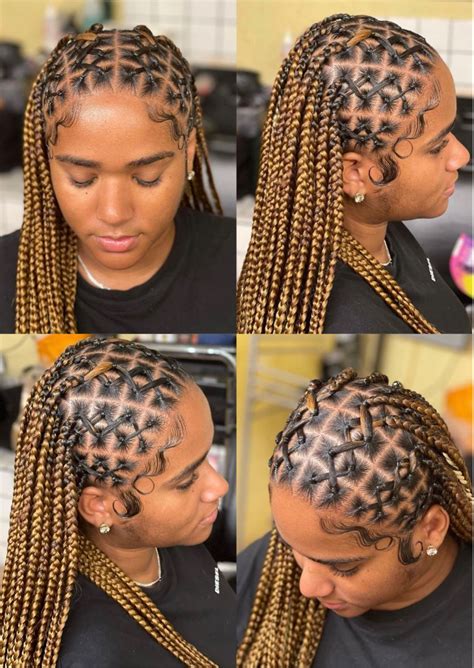Deciding between knotless and box braids can be tough, especially considering both protective styles offer unique advantages. To help you make an informed choice, we’ve compiled a comprehensive guide to the key differences between these two popular hair braiding techniques.

Knotless Braids: The Natural Evolution
Introduced in 2018, knotless braids have quickly gained popularity as a gentler alternative to traditional box braids. Unlike box braids, which are created by knotting extensions directly to the root of the natural hair, knotless braids use a loop method that doesn’t involve any knots or tension. This technique reduces pulling on the scalp, making it suitable for people with sensitive scalps or fragile hair.
Box Braids: The Classic Choice
Box braids have been a staple in African American culture for centuries. They’re created by parting the hair into square or rectangular sections and braiding the hair with extensions using an underhand technique. Box braids offer versatility in terms of length, thickness, and design, allowing for a wide range of looks.
-
Installation Method: Knotless braids are installed using a loop method, while box braids are installed using a knotting technique.
-
Tension: Knotless braids apply less tension to the scalp than box braids.
-
Scalp Sensitivity: Knotless braids are more suitable for people with sensitive scalps or fragile hair.
-
Hairline: Knotless braids can create a more natural-looking hairline than box braids.
-
Volume: Box braids typically create more volume and fullness in the hair.
-
Longevity: Both knotless and box braids can last for several weeks, but knotless braids may last slightly longer due to the lack of knots.
-
Styling: Both knotless and box braids can be styled in a variety of ways, including buns, ponytails, and braids.
-
Maintenance: Knotless braids require less maintenance than box braids, as the loops can easily be tightened as needed.
-
Cost: Knotless braids may be slightly more expensive to install than box braids.
-
Popularity: Box braids remain a more popular choice overall, but knotless braids are gaining popularity rapidly.
-
Tightening Braids Too Often: Overtightening braids can damage the hair and scalp.
-
Leaving Braids in for Too Long: Leaving braids in for extended periods can lead to hair breakage and matting.
-
Improper Installation: Improper installation techniques can increase the risk of tension on the scalp.
-
Overwashing: Overwashing braids can remove natural oils and dry out the hair.
-
Ignoring Scalp Health: Neglecting scalp health can lead to itching, dandruff, and other scalp conditions.
| Feature | Knotless Braids | Box Braids |
|---|---|---|
| Tension on scalp | Low | High |
| Scalp sensitivity | Suitable | May not be suitable |
| Installation method | Loop | Knotting |
| Volume | Less | More |
| Maintenance | Less | More |
| Cost | Slightly higher | Slightly lower |
| Longevity | Slightly longer | Slightly shorter |
| Popularity | Growing | More popular |
The choice between knotless and box braids ultimately depends on your individual preferences and hair type. If you’re looking for a protective style that minimizes tension on the scalp and offers a more natural-looking hairline, knotless braids are a great option. If you’re looking for maximum volume and versatility in styling, box braids may be a better fit. Whichever style you choose, be sure to follow proper installation techniques and avoid common mistakes to ensure healthy hair and a beautiful look.
Q: Which style is better for natural hair?
A: Knotless braids are gentler on natural hair than box braids due to the loop method.
Q: How long do knotless braids last?
A: Knotless braids can typically last for 6-8 weeks with proper care.
Q: Can I swim with braids?
A: Yes, but it’s important to wear a swim cap to protect the braids from chlorine.
Q: How do I maintain my braids?
A: Wash your braids regularly, use a moisturizer, and tighten the loops as needed.
